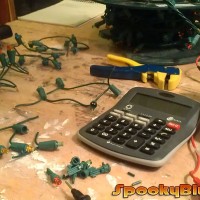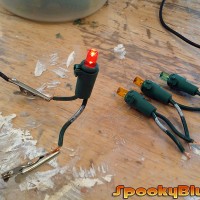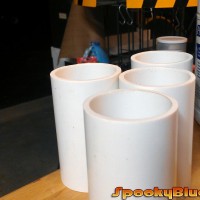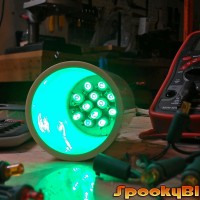Introduction to a Hack
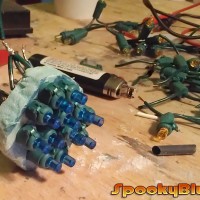 Snug Harbor’s Christmas display got an upgrade last year when we switched to LED lights. It was a no-brainer, from a technical standpoint. Two strands of LEDs replaced a dozen strands of incandescent bulbs, minimizing potential failure points (i.e. those tiny little fuses housed in the plug), and removing all but one extension cord.
Snug Harbor’s Christmas display got an upgrade last year when we switched to LED lights. It was a no-brainer, from a technical standpoint. Two strands of LEDs replaced a dozen strands of incandescent bulbs, minimizing potential failure points (i.e. those tiny little fuses housed in the plug), and removing all but one extension cord.
Your ol’ pal Spook isn’t a fan of hanging from the roof gables, and devoted readers know my general opinion of Christmas lights; they want to kill you. The less time I’m forced to devote to electrical engineering while poised forty feet in the air, the better. This, more than the energy savings, was the main selling point for me.
After not getting killed, I climbed down the ladder and went to the middle of the yard to survey my work. The day had been warm, but it was chilly now as the sun wandered off into the trees. The early evening had grown quiet as mothers called kids in for supper, steadily emptying yards up and down the street. I stood alone in my yard, looking up at our new LED Christmas lights, and it was a significantly disappointing moment in my life.
The words “glow” and “glare” are considered synonyms, but only in the sense that they both mean “radiate”. Instead of glowing warmly with the happy blush of electric gingerbread, Snug Harbor glared. And it glared coldly. With a perceptible seizure-inducing 60 Hertz flicker, its harsh blue-green aura had all the charm of a florescent light scowling over a meat locker.
Oh, those lights were ugly. But needs must when the devil drives, so I left them up. And that’s the story of how Shadow Wood came into a wealth of outdoor LED lights to hack the following season.
In Part II of this series, “Light your haunt with hacked LED Christmas lights“, or “I told you that story to tell you this one”, we’ll step through all the fiddly bits, discuss how to re-purpose a 12V low-voltage transformer to power the fiddly bits, and explore the reasons why this project is probably a bad idea.

